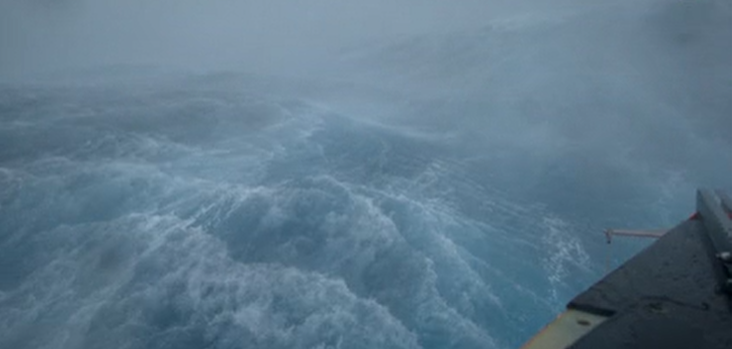The Hurricane Chase
Saildrone and the National Oceanic and Atmospheric Administration (NOAA) had directed Saildrone Explorer SD 1078 into the eye of Hurricane Fiona before its impact on Bermuda and the Canadian province, Nova Scotia. The first Category 4 storm of the 2022 season was currently on a path northward across the Atlantic Ocean during the hurricane chase.
SD 1078 is among the seven saildrones that operate in the Atlantic Ocean and Gulf of Mexico to gather and provide data directly to NOAA’s Pacific Marine Environmental Laboratory (PMEL) and Atlantic Oceanographic and Meteorological Laboratory (AOML). This data will help improve storm forecasting and reduce the number of fatalities in coastal towns by enabling improved preparedness in those areas.
Inside the Storm
SD 1078 was the fourth Saildrone USV to interact with the devastating Hurricane Fiona. Frightening footage captured showed how the tidal swells rocked the uncrewed wind-powered vehicle back and forth. When it sailed over SD 1083, about 400 nautical miles east of Montserrat, Hurricane Fiona was still a tropical storm. The vehicle recorded wind gusts of more than 40 mph.
As SD 1078 passed over SD 1031, which was close to Puerto Rico, where Fiona first made landfall, the storm had intensified to a Category 1 storm. SD 1078 was confronted with over 100 mph winds and seas up to 50 feet high as it began its voyage. Before surfing down a massive 55-foot wave at 39.7 mph, it travelled at sustained rates of over 9 mph inside the hurricane’s eye.
The SD 1031, on the other hand, measured a minimum central pressure of 986 mb when travelling inside the eye. At the storm’s edge, SD 1040, which was stationed north of Puerto Rico, measured winds of more than 60 mph and seas as high as 40 feet. For a better understanding of how these dangerous weather systems form, the data gathered by the various Saildrone USVs engaged with Hurricane Fiona will be of great value.
Hurricane Saildrone Project Expansion
The Hurricane Saildrone project is being expanded by NOAA and Saildrone this year with two additional saildrones, following the success of the initiative last year. People may be caught off guard and unable to flee or effectively prepare when hurricanes rapidly increase. It can result in huge amounts of destruction or even fatalities. Richard Jenkins, Saildrone founder and CEO, has stated:
“Saildrone is once again demonstrating its ability to provide critical ocean data in the most extreme weather conditions. Hurricane Fiona intensified from a tropical storm to a Category 1 hurricane just before hitting Puerto Rico, causing significant damage and loss of life. The data Saildrone vehicles are gathering will help the science community better understand rapid intensification, giving people living in our coastal communities more time to prepare.”
With the wider NOAA initiative to research hurricane intensification that includes the seven saildrones, scientists expect to be able to contribute to improving storm models and predictions, as well as the accuracy of real-time forecasts, by sending real-time data to hurricane forecasters.
Saildrone will be exhibiting on booth B30 at Oi Americas 2023!


